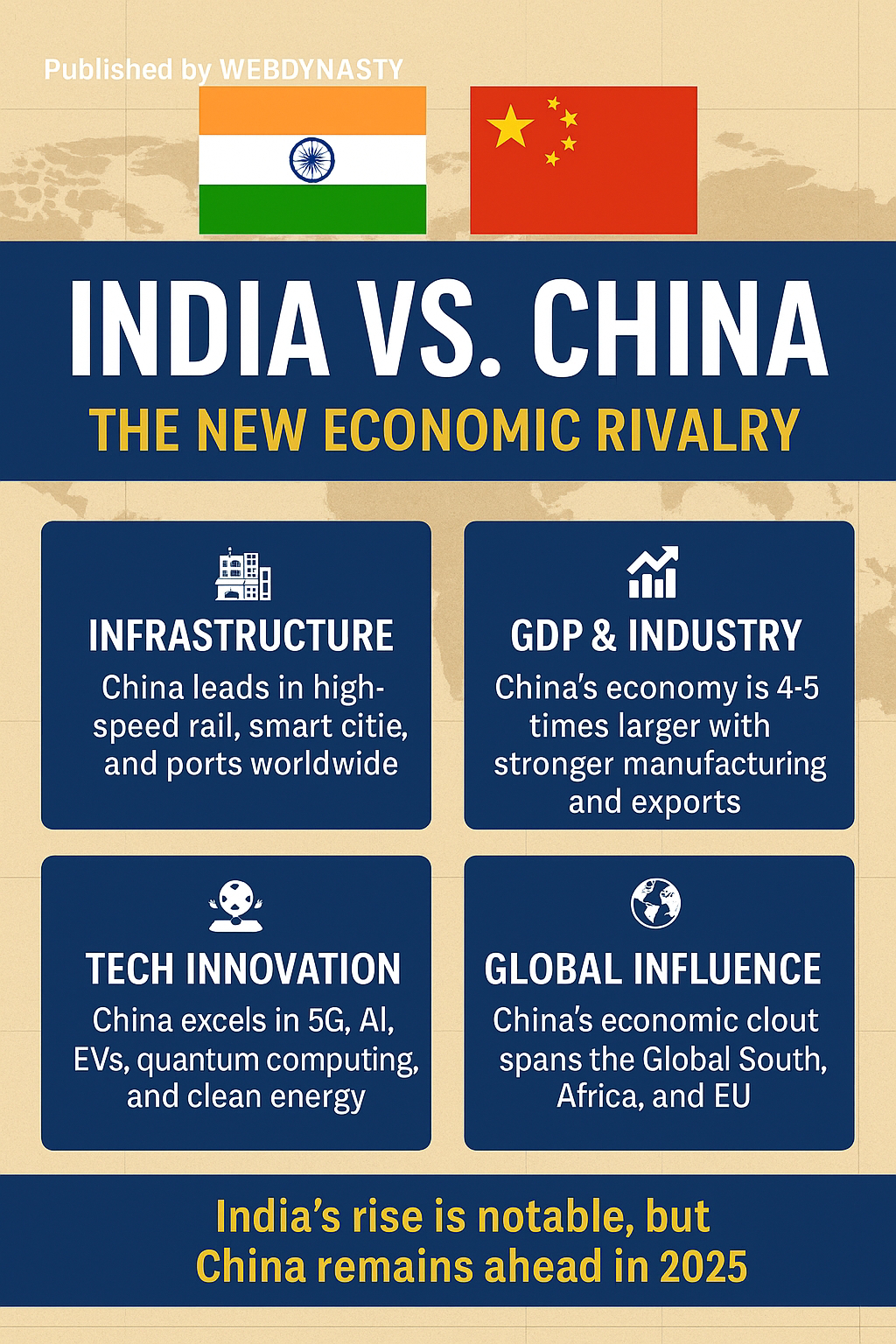China’s Industrial Growth 2025: Expansion, Challenges & Strategic Shifts
China’s Industrial Growth 2025: Expansion, Challenges & Strategic Shifts
Written by WebDynasty
China's industrial landscape is undergoing a significant transformation in 2025. While growth remains resilient, the ecosystem is adapting to headwinds like overcapacity, cooling consumer demand, and shifting global dynamics. Let’s unpack the latest trends shaping China’s industrial evolution.
Steady Industrial Expansion with New-Tech Momentum
- Moderate 2025 Growth: Industrial output rose 5.8% year on year in May, down slightly from April's 6.1%—the slowest expansion since late 2024 .
- First Half Performance: For H1 2025, industrial enterprises above designated size posted 6.4% growth. Manufacturing led with 7.0%, and high-tech segments outpaced overall figures—equipment manufacturing surged 10.2%, and high-tech manufacturing grew 9.5% .
- Early Year Boosts: In Jan–Feb, industrial production climbed 5.9%, underpinned by robust manufacturing and high-tech investment .
Tech Powerhouses Driving Industrial Resilience
- High-Tech Growth: Sectors like 3D printing (+43%), industrial robots (+35.5%), and new energy vehicles (+31.7%) remain standout performers .
- Capital Investment Shifts: In 2025 H1, high-tech manufacturing investment jumped 7.5%, and infrastructure spending rose 4.6%, while real estate sector investment dropped 11.2% .
- Emerging Trends: Early 2025 data show high-tech investment growing at 9.7%, especially in information services (+66.4%) and aerospace manufacturing (+27%) .
Structural Challenges & Economic Headwinds
- Growth Cooling Signs: China's July industrial output trimmed to 5.7%, the lowest in eight months. Retail sales stagnated at just 3.7%, marking the slowest pace since December 2024 .
- Broader Economic Pressures: Challenges from property market decline, weak private sector investment, and declining consumer sentiment are weighing heavily on expansion .
- Consumption Weakness: The World Bank projects growth slowing to 4.5% in 2025 and around 4.0% in 2026, highlighting subdued domestic demand and structural spending challenges .
Strategic Shifts & Industry Rebalancing
- Overcapacity Crackdown in Solar Industry: The government is forming a 50 billion yuan consortium to retire inefficient polysilicon capacity and stabilize prices. This comes amid global supply-demand mismatches and local resistance .
- 'Made in China 2025' Progress: China leads globally in at least five strategic areas—like EVs, high-speed rail, drones, solar panels, and graphene—and achieved over 86% of its targets across 13 focus sectors .
- EV & Tech Innovation Surge: EV firms like Xpeng expect revenue nearly doubling in Q3 FY25, buoyed by strong domestic demand and policy support .
- Industrial Self-Sufficiency Push: President Xi emphasized domestic manufacturing strength and self-reliance, reinforcing technology-heavy policies under the “Made in China 2025” vision .
Final Word
China’s industrial growth in 2025 is evolving into a narrative of technology-driven strength amid structural recalibration. High-tech and manufacturing sectors are outperforming averages, while the broader economy faces a slowdown, especially in consumption and real estate.
Industrial transformation, rather than raw GDP figures, will define China's economic story—showcasing cutting-edge innovation, strategic consolidation, and resilience against global headwinds.




Comments
Post a Comment